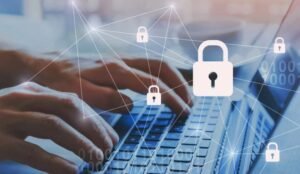Introduction to the Java Sea Leaks
The concept of thejavasea.me leaks, particularly the AIO-TLP287 incident, has emerged as a significant topic of conversation in the domain of data security and information integrity. Thejavasea.me serves as a platform that has been involved in the dissemination of sensitive information, prompting widespread concern regarding data protection measures. AIO-TLP287, a specific leak associated with this website, highlights the potential vulnerabilities that exist within various systems and the impact of unauthorized data exposure.
Understanding the nature of thejavasea.me leaks is crucial, as it sheds light on the underlying issues related to data management and security protocols. AIO-TLP287 has become a focal point for discussions around the implications of leaked data, including personal, financial, and organizational information. In a digital age where information is abundantly available yet increasingly susceptible to breaches, this leak underscores the necessity for robust cybersecurity practices.
Readers must be aware of the ramifications of these leaks, which can extend beyond mere data exposure to affect trust and credibility in digital platforms. The significance of thejavasea.me leaks lies not only in their immediate consequences but also in their potential to inform future strategies for data protection. Organizations and individuals alike can gain insights into best practices for safeguarding their information by examining incidents such as AIO-TLP287. Heightened awareness and understanding are vital, as they empower the audience to take proactive measures against potential data risks.
Understanding AIO-TLP287: Details and Background
AIO-TLP287 is a significant data leak that has drawn attention due to its scale and the sensitive nature of the information involved. This leak consists of various types of data, including personal details, financial records, and potentially proprietary information, which have raised serious concerns about privacy and data security. The origin of AIO-TLP287 remains somewhat ambiguous, with several theories proposed regarding its source. It is believed that the leak may have originated from insufficient security measures employed by organizations or third-party vendors that manage sensitive data.
The types of information exposed in the AIO-TLP287 leak could potentially include names, addresses, social security numbers, and other identifiable information of individuals. In addition, organizations may face exposure of employee details and internal communications, which could significantly undermine their operational integrity. Such data breaches can lead to a range of repercussions for both individuals and corporations, including identity theft, financial loss, and damage to reputation. As the digital landscape continues to grow, the need for robust cybersecurity measures has become increasingly urgent.
Understanding the technical aspects behind AIO-TLP287 is essential to grasp the full extent of its impact. The vulnerabilities exploited in this leak may stem from outdated software systems, unpatched security flaws, or improper data handling practices. Organizations often fail to recognize the critical importance of maintaining secure backup protocols and conducting regular security audits. The responsibility lies not only with internal teams but also with third-party service providers who may have access to sensitive data. The consequences of such leaks can be catastrophic, leading to legal ramifications and a loss of consumer trust that can take years to rebuild.

The Implications of thejavasea.me Leaks AIO-TLP287
The recent leaks associated with thejavasea.me, particularly concerning AIO-TLP287, raise significant concerns across various dimensions, including legal, ethical, and personal implications. Primarily, the leaks pose serious risks related to identity theft, as sensitive information may fall into the wrong hands. Such data breaches can lead to unauthorized access to personal accounts, financial theft, and can compromise the privacy of numerous individuals.
From a legal standpoint, affected individuals may find themselves in a challenging position. The laws governing data privacy and protection, such as the General Data Protection Regulation (GDPR) in Europe, impose stringent obligations on organizations to safeguard personal data. Organizations implicated in the leaks may face substantial fines and legal battles, ultimately affecting their reputation and operational viability. Victims of identity theft stemming from the leaks could also seek legal recourse, placing additional pressure on affected entities to rectify the situation and compensate those harmed by the breaches.
Ethically, the release of such sensitive information calls into question the responsibility of organizations managing personal data. Stakeholders expect a certain degree of ethical conduct in safeguarding their information, and breaches like these can erode public trust. As the internet continues to expand, the societal impact of data leaks is profound. A generalized fear of data security could lead to individuals being wary of online transactions or engagements, thereby stunting digital commerce growth and innovation.
Moreover, the implications extend beyond individual cases, influencing collective perceptions of data security across the internet. As confidence in digital infrastructures diminishes, the potential for growth in the tech sector and the adoption of emerging technologies may be hindered. Each of these factors showcases the extensive ramifications of thejavasea.me leaks, underscoring the necessity for robust data protection measures and ethical standards in today’s digital landscape.
Best Practices for Staying Safe Amidst Data Leaks
In the wake of recent data leaks, such as the one involving thejavasea.me leaks AIO-TLP287, it is crucial for individuals to adopt effective strategies for protecting their personal data. The first step is to monitor your accounts closely for unusual activity. Regularly reviewing bank statements, social media accounts, and other critical platforms can help you spot unauthorized transactions or changes that may indicate a security breach.
Another essential practice is to utilize strong, unique passwords for each of your online accounts. Passwords should include a mix of letters, numbers, and special characters. A password manager can assist in generating and storing complex passwords safely, minimizing the risk of reusing passwords across multiple sites, which can greatly enhance security.
Enabling two-factor authentication (2FA) wherever possible is another effective measure against potential threats stemming from data breaches. This additional layer of security requires not only a password but also a second form of verification, typically via a mobile device. By utilizing 2FA, the risk of unauthorized access significantly diminishes, even if passwords are compromised.
It is also important to be aware of phishing scams that often follow data leaks. Be cautious with unsolicited emails or messages asking for personal information. Always verify the source before clicking on links or providing sensitive data. Additionally, consider enrolling in identity theft protection services if you believe your personal information has been compromised. Such services often monitor various channels for potential misuse of your data, providing an added sense of security.
Lastly, staying informed about the latest cybersecurity trends and vulnerabilities can empower you to take proactive measures against threats. Engaging in forums or following credible security blogs can help you stay abreast of best practices and emerging risks, further ensuring your personal information remains protected.


